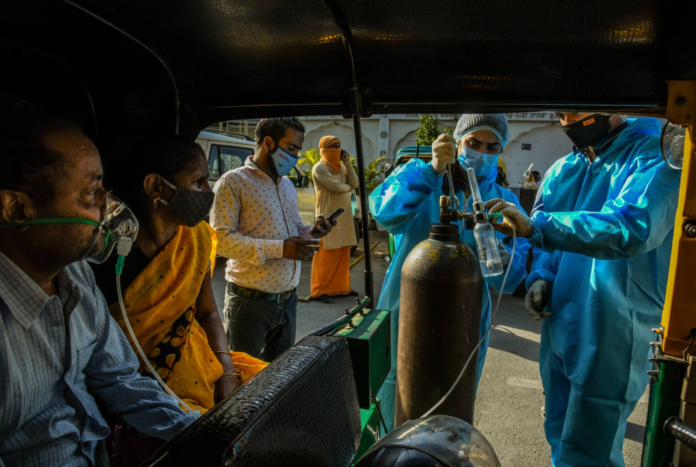In the past week, the COVID-19 crisis in India has grown to become the largest outbreak in the world. Each day averages 400,000 new cases reported with approximately 4,000 daily deaths. Although these numbers are panic-worthy, it is likely that they are being severely underestimated. India’s enormous population, lax government oversight, the number of rural citizens, and the strained healthcare system all point towards the daily cases and deaths being much higher.
Many different factors contributed to this deadly second wave of COVID-19. Variants of the original virus, such as the B.1.1.7 and B.1.617 variant, have been rapidly spreading in India. These variants are much more transmissible than their counterparts, leading to a rise in infection rates. Additionally, slow-to-act government responses have inhibited stay-at-home orders or restrictions on activities, compounded by governmental and religious events promoted nationwide. In a political rally in early 2021, Prime Minister Modi assured the crowd the worst of the pandemic was over and ceremoniously took off his mask. He is now being criticized for prioritizing the upcoming elections instead of the health and safety of the public.
Although India has some of the top vaccine manufacturers, the government has been slow to vaccinate the public and has instead prioritized the sale of doses to wealthier nations. Only around one in fifty people has been fully vaccinated in India, a number which is expected to decrease as supply diminishes. As the second wave gets worse, hospitals have begun to turn away patients because of a lack of oxygen tanks, ventilators, hospital beds, and other crucial medical supplies. The ashes and smoke from multiple cremation grounds signal the unfortunate events that will most likely continue in the upcoming weeks.
India’s COVID-19 crisis poses a significant threat to the world’s economy and society. India’s pharmaceutical industry is the third-largest in the world and contributes to one-fifth of the nation’s generic pharmaceutical exports and seven-tenths of the world’s vaccines. India was given the rights to produce 65 countries’ AstraZeneca vaccine supply, but is currently unable to export any vaccine supply. India’s vaccine exports have been repurposed to immunize Indian nationals, which may go in vain as there is a 6-12 week waiting period between dose appointments. This lack of worldwide vaccines could lead to a terrible second wave for a lot of poorer countries.
As we see all these terrifying global repercussions, we also see the camaraderie. The United States and other countries, such as the United Kingdom and Germany, have deployed several emergency relief shipments to India and plan additional medical aid. USAID has sent 960,000 Rapid Diagnostic Tests and 100,000 N95 masks. The US government will also send an initial delivery of 1100 oxygen cylinders, 1,700 oxygen concentrators, 15 million N95 masks, 1 million Rapid Diagnostic Tests, including a Californian shipment of 440 oxygen cylinders and regulators. In addition to PPE supplies, the US will also redirect its order of AstraZeneca manufacturing supplies to India, allowing for the production of 20 million additional doses of the vaccine.
The recovery of India is critical to the global economy, the vaccination process in poorer countries, and political relations. As more countries provide emergency aid to India and as India tries to vaccinate its population, people hope to prevent further loss. There is hope that there will be progress and this second wave will soon pass.
